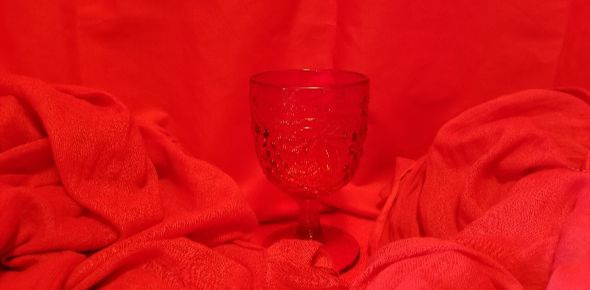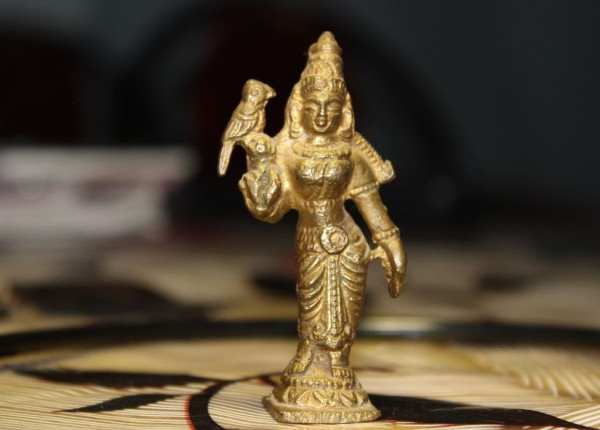We are discussing Lawrence Gibney’s documentary Going Clear, Scientology and the Prison of Belief. In L. Ron Hubbard and the O.T.O. we examined Hubbard’s involvement with the Ordo Templi Orientis and his role in Jack Parson’s Babalon Working. In L. Ron Hubbard the Magician we evaluated Hubbard’s (meager) accomplishments in that field.
In the documentary, author Lawrence Wright called Parsons “the head honcho in this black magic cult.” That cult, he said, “was” the O.T.O., Ordo Templi Orientis. Of course the O.T.O. is very much extant and I am a member. I don’t identify as a member of a cult or as a practitioner of black magic. So what does “black magic cult” actually mean?
Let’s take a look at the documentary. The discussion of Ordo Templi Orientis is illustrated by an inverted pentagram with a goat’s head, the famous photo of Crowley making horns on his head, and some footage from Kenneth Anger’s film Inauguration of the Pleasure Dome featuring Marjorie Cameron. Wright stated that Parsons was trying to impregnate a goddess like woman with “the anti-Christ.” (Parsons was working toward a physical manifestation of Babalon.)
The Cameron footage, while lurid, is appropriate to the discussion as she was involved in the Babalon Working. However the inverted pentagram and discussion of the “anti-Christ” don’t describe the O.T.O. but are Hollywood shorthand. This is spooky window dressing for the documentary and serves the same function as the spooky theremin music score. I suppose the intent is to indict Hubbard by association. However it’s clear that Wright and Gibney didn’t take the time to investigate the O.T.O. We’re not hard to find and we’re not hard to talk to – scholars routinely consult our archives, and knowledgeable O.T.O. members consult on documentaries and other films. For my money the segment is sloppy and inaccurate.
Cult is a loaded word. Hugh Urban comments, “the term ‘cult’ has long been used to delegitimate, dismiss, and in some cases attack groups that do not fit the mainstream ideal of religion.” Gibney’s documentary uses this term rather than the term “religion” to define Scientology. Urban points out that Scientology has been labeled as a cult since the 1970s. He discusses the impact of the term, noting that most American scholars of religions have vehemently rejected it as bigoted and dehumanizing, and that cult members are seen as brainwashed and duped by their leader. This general narrative played out in Gibney’s documentary, which described the church’s methodology as brainwashing and questioned the sanity and motives of its founder.
Historically the word magic has been used in a similar way as the word cult, contrasting primitive and supersitious practices, “magic”, with sophisticated spirituality, “religion”. Similarly “black” is shorthand for evil, often paired with “magic” to indicate dangerous and distasteful beliefs and practices. “Black magic cult” is a true weapon of a phrase, branding the group so described as evil, dangerous, and deluded. Using the phrase is in and of itself sensationalist and suspect.
How does the O.T.O. compare with Scientology? Critics of Scientology point to the tremendous financial investment members make, a pay as you go operation which requires many thousands of dollars to gain access to the church’s teachings. The church’s billions fund a full time clergy and major real estate holdings around the world. Those who venture beyond general membership into the clergy level of the church report exploitive labor practices and abusive punishments. Some report physically fleeing incarceration. Those who leave the church say they are cut off from their families, and clergy report being physically chased by security who attempt to bring them back into the fold. Children raised within the clergy organization describe being separated from their parents and also report spending long hours in physical labor. Finally, the church notoriously attacks journalists who attempt to report on these practices.
The O.T.O. is a fraternity which incorporates the religious organization Ecclesia Gnostica Catholica. Its member groups rent space for events. Some events are open to the public, including the Gnostic Mass, while others are open to members only. The fraternity offers initiations in a system similar to that of Freemasonry. The yearly dues for each initiatory level of membership are publically published on the O.T.O.’s web site. National and local group dues together are modest and commensurate with those of many similar organizations. Members and officers of the O.T.O. are volunteers, hold day jobs, and have many other interests in addition to the organization. Members engaging in violent or abusive behavior can be expelled, which means that they are prohibited from attending Order events, but current members are not prohibited from contact with expelled members.
So the O.T.O. does not make money from its members, offers spiritual experiences to the public, polices membership for unsafe behavior but not orthodoxy, and maintains its activities on a moderate level of volunteer labor. Why are we a black magic cult again?
Oh yes, the Gnostic Mass. In our creed we profess belief (among other things) in Chaos, the sole viceregent of the sun upon the earth; Babalon, the mother of us all; and Baphomet, the serpent and the lion, mystery of mysteries. This is a non-Christian belief system but that does not make it anti-Christian. It may seem distasteful, but again, that does not make it dangerous; if it seems evil, that evil is in the eye of the beholder.
There’s also the sex. Aleister Crowley was a sex magician, I am a sex magician, many Thelemites I know are sex magicians, and the Mass celebrates sexuality in a symbolic way. Thelema does not approach sexuality as inherently evil or distasteful and does not impose morality on sexual behavior per se. We do insist on respectful behavior and condemn coercive behavior. That said, each of us, women and men alike, own our bodies and make our own choices about who we will touch and who we will love. This too can seem evil and dangerous to those who distrust and seek to restrict sexuality.
Most importantly the O.T.O. promulgates the law of freedom, “Do what thou wilt shall be the whole of the Law,” and “Love is the law, love under will.” Thelema does not seek to enslave others and enjoins us not to permit ourselves to be enslaved. It’s difficult to imagine a Thelemite tolerating the kinds of treatment ex-Scientologists report they have endured.
People both inside and outside the Order are asking whether the rest of Gibney’s documentary is as badly researched as the O.T.O. segment. I have read many of accounts from ex-members and ex-clergy which dovetail with the experiences reported by the people interviewed for the documentary. I deeply sympathize with the emotions of those who feel they have been defrauded of money, separated from family, imprisoned and abused. However labeling the church as a cult and describing its practices as brainwashing seems at best sensationalist and polarizing; at worst, it discredits the effort to bring these practices to light. It is possible to criticize a religion without demonizing it, and the fact that a religion engages in these practices should not excuse them.
Branding Scientology as a brainwashing cult reflects not only on current membership but ex members. Some of those ex members continue to practice the religion, saying that their problem is with the governance of the current leadership, not the beliefs or practices themselves. They report that the church subjects them to particular harassment and that the church claims trade secret status for their teachings, presumably because alternative channels for the information cuts into the church’s income stream. Are these ex-members also participating in a cult? Are they brainwashing each other? The terminology does not extend respect to these people for their practices or beliefs.
Surely abusive and explotive practices are alarming enough in and of themselves without the need to resort to non-credible terminology. Or theremin music. Or labeling another organization a “black magic cult” without bothering to dialogue with it.
Urban, Hugh (2011). The Church of Scientology: A History of a New Religion. Princeton: Princeton University Press.




